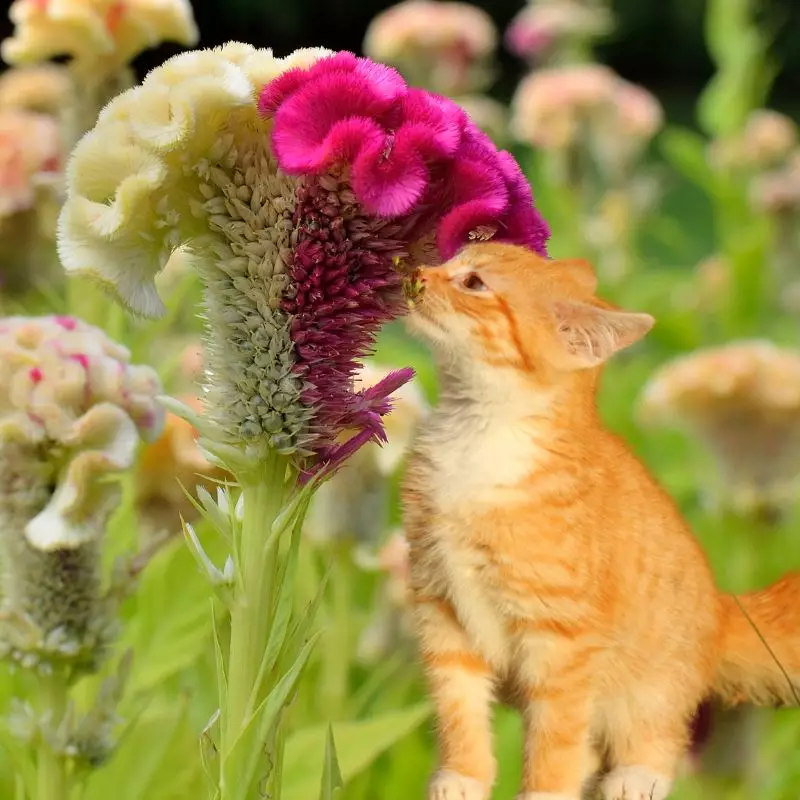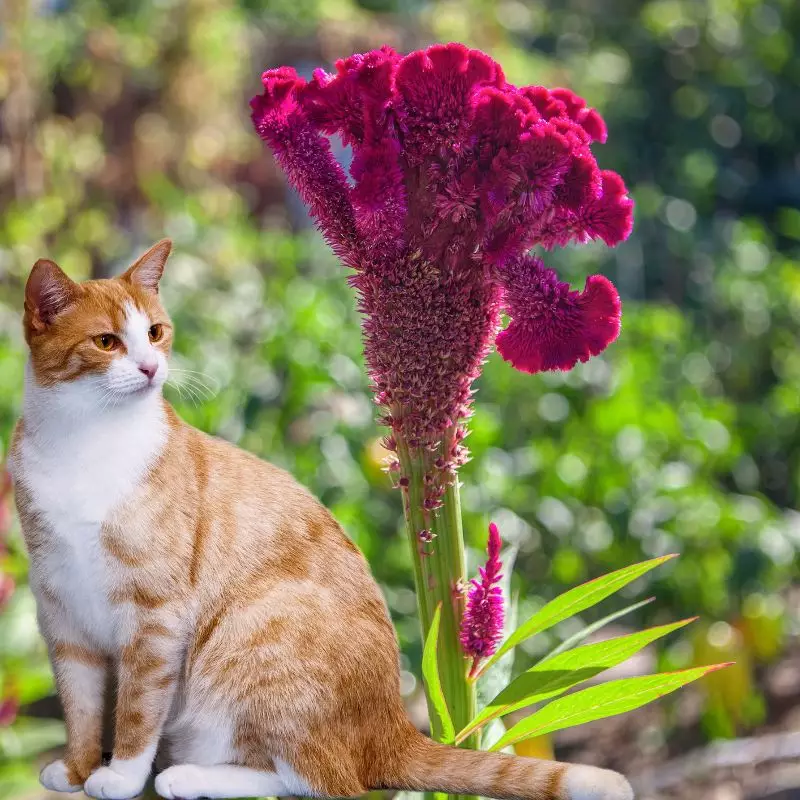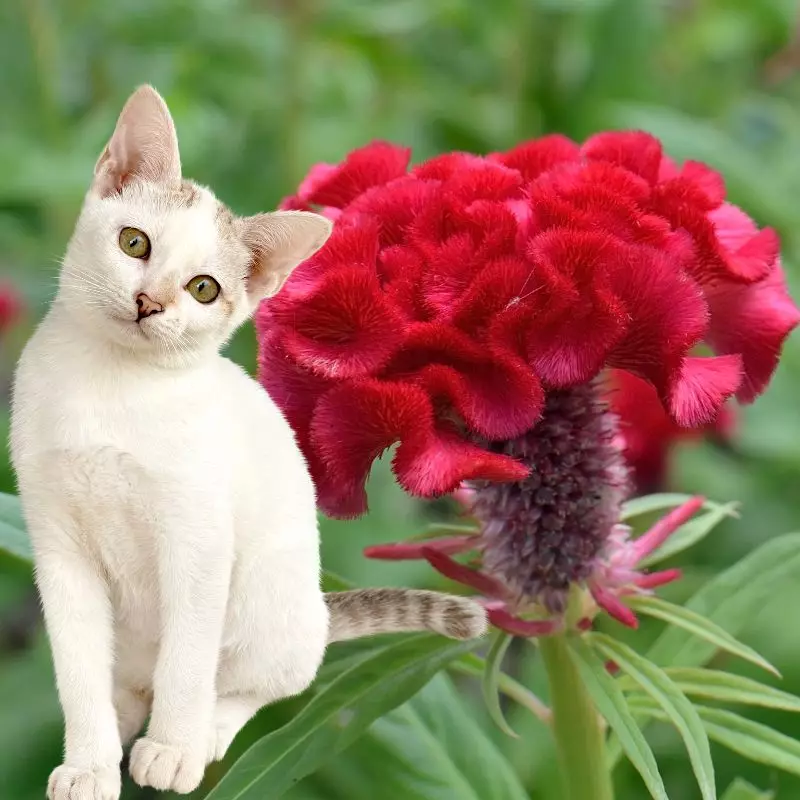No, Woolflower is not toxic for cats.
To ensure the credibility of this statement, this article was written in collaboration with a team of experienced DVMs (doctors of veterinary medicine). Their invaluable insights and contributions enable us to provide accurate and up-to-date information about the potential risks associated with various plants, including Woolflower, and their effects on cats. Our research is not solely reliant on our DVM collaborators; we also referenced high-authority websites such as ASPCA and PetMD.
According to the ASPCA (American Society for the Prevention of Cruelty to Animals), Woolflower is also non-toxic for dogs, making it a safe and excellent plant choice for pet owners. If you’re considering enhancing your garden, you can confidently grow this shrub without any concerns regarding your cats’ safety.
Can Cats Eat Woolflower?

It wouldn’t be bad for cats if they accidentally munched on a wool flower. However, cats should avoid eating too many plants (of any kind).
Cats are scientifically classified as carnivorous species. Unlike herbivores and omnivores, they lack the enzymes that can digest plants in their stomach. Therefore, their diet is mostly from protein-based meals. Although they occasionally feed on plants as a source of fiber, the wool flower is not an ideal source of this nutrient.
If your cat has eaten a plant that is contaminated with toxic residues that came from plant care products like fertilizers and pesticides, it may cause them poisoning. Thus, it is better to keep your cats away from plants whether toxic or not.
What is Woolflower?

The wool flower is an Amaranth family plant that is native to Africa and tropical America. It is a cockscomb species (Celosia cristata) that is grown as a garden ornamental and is also known as the wool flower due to its dense chaffy floral spikes that glisten.
Celosia species are distinguished by simple or lobed alternate leaves and small eye-catching flowers in dense spikes. Cultivated forms’ inflorescences are frequently flattened or rippling, forming compact or feathery clusters.
The wool flower can reach a height of one meter and is regarded as a weed in some parts of the world where it has been introduced. This plant can be grown from seed.
The wool flower has been used as a food source during times of drought. Torcata is a dish made by boiling the leaves like cabbage. In Africa, it is also consumed as a vegetable.
Keeping Cats Away From Woolflower

If your cat likes to explore your garden at night, installing a motion-activated spotlight might be a good deterrent.
A motion-activated sprinkler is an additional choice you might think about. Both daytime and nighttime kitties sprawled in your garden can be scared away with a gentle sprinkle from a motion-activated sprinkler hose.
Additionally, there are good commercial deterrents that you can buy online or in pet supply stores near you. These products probably taste bitter or smell citrusy, which deters cats as they are not fond of these odors.
Plants to Avoid For Your Cats
If you are a cat owner and unsure if the plants growing in your yard are harmful to your cats, check out this list of toxic plants for cats. You can also check our list of non-toxic plants for cats.





